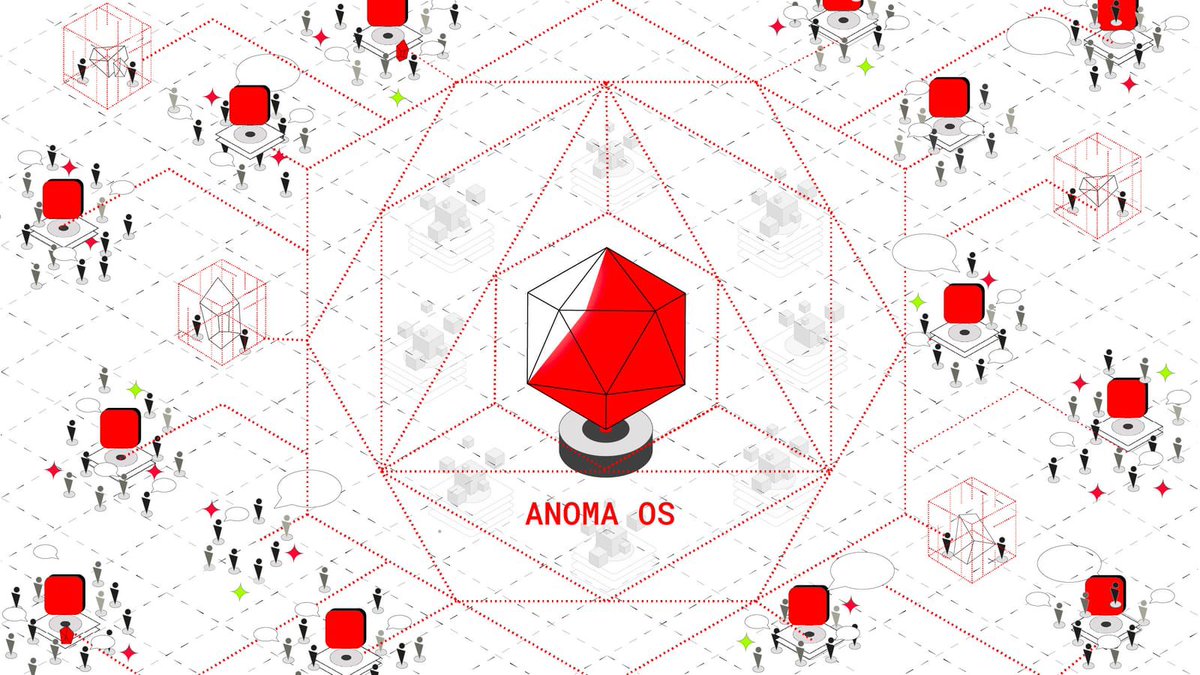[GUEST ACCESS MODE: Data is scrambled or limited to provide examples. Make requests using your API key to unlock full data. Check https://lunarcrush.ai/auth for authentication information.]  Frigg 🌸 [@0xfrigg](/creator/twitter/0xfrigg) on x 75.1K followers Created: 2025-07-18 10:44:36 UTC I’ve been deep diving into @anoma ’s architecture for weeks. And honestly, the more I learn, the more convinced I am that Anoma isn’t just a blockchain it’s a shot at redefining how Web3 works altogether. This isn’t another L1, another rollup, or some modular plug in. Anoma wants to become Web3’s Operating System an intent-centric layer that abstracts away chains, wallets, and app fragmentation. You don’t build “for a chain.” You build for Anoma’s Intent Machine, and your app just works everywhere. At its core? → Intent centric UX where users only declare outcomes solvers, sovereign domains, and Typhon handle the rest. → Apps become chain agnostic frontends instead of chain bound contracts. → Privacy first by design, thanks to Ferveo, Taiga, and ZK. Web3’s been stuck in the “Chain Era”competing on speed, fees, TPS. Anoma shifts this to the Application Era: → Deploy once, run anywhere. → Sovereign domains let you customize trust models. → On demand consensus means no global bottlenecks. The multichain world right now? A mess of bridges, wrapped assets, liquidity silos. Anoma’s answer? Native cross chain intents. No bridges, no synthetic assets just atomic, decentralized coordination across domains, powered by Chimera Chains. But what really hit me is their vision for Plural Money and Game B Economics. Web3 inherited extractive finance. Anoma’s programmable money, sovereign economic zones, and privacy preserving interactions open the door to community driven, values aligned economic systems. And everything from matching to mempool encryption is built for true end to end decentralization. No sequencers, no relayers, no middleware. Just pure peer to peer interaction, dynamic consensus, and decentralized coordination. Anoma isn’t here to patch Web3’s flaws. It’s a complete rethink. And honestly? It might just be what this space needs.  XXXXXX engagements  **Related Topics** [coins wallets](/topic/coins-wallets) [web3](/topic/web3) [blockchain](/topic/blockchain) [anoma](/topic/anoma) [Post Link](https://x.com/0xfrigg/status/1946159161915637909)
[GUEST ACCESS MODE: Data is scrambled or limited to provide examples. Make requests using your API key to unlock full data. Check https://lunarcrush.ai/auth for authentication information.]
 Frigg 🌸 @0xfrigg on x 75.1K followers
Created: 2025-07-18 10:44:36 UTC
Frigg 🌸 @0xfrigg on x 75.1K followers
Created: 2025-07-18 10:44:36 UTC
I’ve been deep diving into @anoma ’s architecture for weeks. And honestly, the more I learn, the more convinced I am that Anoma isn’t just a blockchain it’s a shot at redefining how Web3 works altogether.
This isn’t another L1, another rollup, or some modular plug in. Anoma wants to become Web3’s Operating System an intent-centric layer that abstracts away chains, wallets, and app fragmentation. You don’t build “for a chain.” You build for Anoma’s Intent Machine, and your app just works everywhere.
At its core?
→ Intent centric UX where users only declare outcomes solvers, sovereign domains, and Typhon handle the rest. → Apps become chain agnostic frontends instead of chain bound contracts. → Privacy first by design, thanks to Ferveo, Taiga, and ZK.
Web3’s been stuck in the “Chain Era”competing on speed, fees, TPS. Anoma shifts this to the Application Era:
→ Deploy once, run anywhere. → Sovereign domains let you customize trust models. → On demand consensus means no global bottlenecks.
The multichain world right now? A mess of bridges, wrapped assets, liquidity silos. Anoma’s answer? Native cross chain intents.
No bridges, no synthetic assets just atomic, decentralized coordination across domains, powered by Chimera Chains.
But what really hit me is their vision for Plural Money and Game B Economics. Web3 inherited extractive finance. Anoma’s programmable money, sovereign economic zones, and privacy preserving interactions open the door to community driven, values aligned economic systems.
And everything from matching to mempool encryption is built for true end to end decentralization.
No sequencers, no relayers, no middleware. Just pure peer to peer interaction, dynamic consensus, and decentralized coordination.
Anoma isn’t here to patch Web3’s flaws. It’s a complete rethink.
And honestly? It might just be what this space needs.

XXXXXX engagements
Related Topics coins wallets web3 blockchain anoma